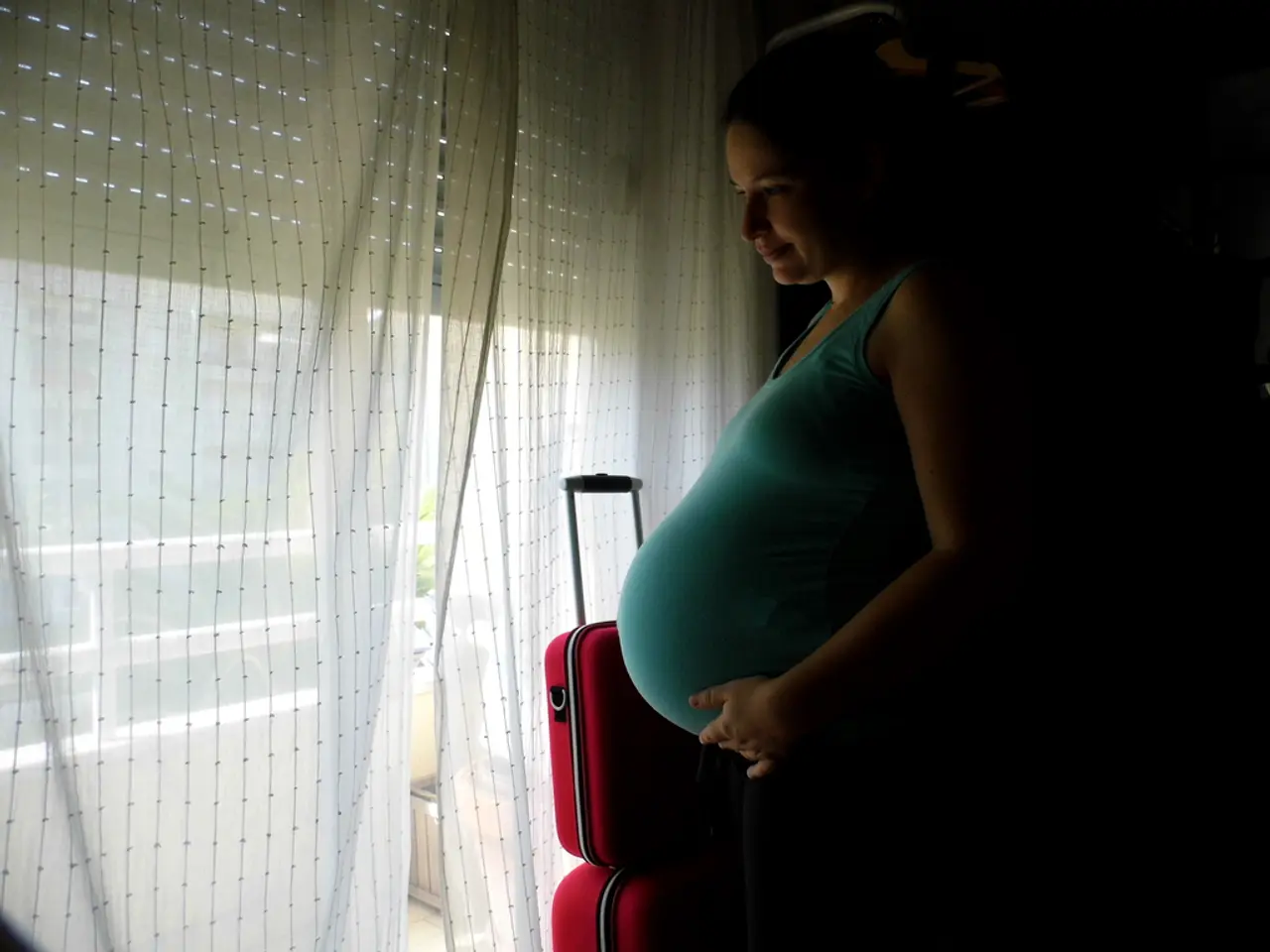Challenges Faced During the Final Pregnancy Stages: A Review of Regular Issues Expecting Mothers May Encounter in Their Third Trimester
**Common Pregnancy Complications in the Third Trimester**
As the third trimester of pregnancy approaches, expectant mothers may face a variety of health challenges. This article aims to provide an overview of some common complications that can occur during this critical period, along with their symptoms, treatment options, and risk factors.
### 1. Placental Abruption
Placental abruption is a rare but potentially life-threatening condition where the placenta separates from the uterus before labor. Symptoms include vaginal bleeding, abdominal pain, contractions, and the body going into shock. Immediate medical attention is crucial for treatment, which may involve bed rest, fetal monitoring, and possible delivery if separation is severe. Risk factors include high blood pressure, previous abruptions, and smoking.
### 2. Placenta Previa
Placenta previa is a condition where the placenta partially or completely covers the cervix. This can cause heavy bleeding without pain in the second or third trimester. To manage this condition, it's essential to avoid heavy lifting and strenuous activities. If bleeding is heavy, hospitalization may be required. Risk factors include previous uterine surgery, multiple gestations, and previous placenta previa.
### 3. Preeclampsia
Preeclampsia is a major complication characterized by high blood pressure and protein in the urine. Symptoms include high blood pressure, protein in urine, swelling, headaches, and blurred vision. Treatment involves close monitoring of blood pressure and urine protein levels, rest, hydration, and hospital admission if necessary. Delivery is the definitive treatment. Risk factors include first pregnancy, family history, and pre-existing hypertension.
### 4. Intrahepatic Cholestasis of Pregnancy (ICP)
ICP is a liver condition causing bile buildup. Symptoms include intense itching without rash, typically in the hands and feet, dark urine, and fatigue. Treatment involves Ursodeoxycholic acid (UDCA) for symptom relief and monitoring for preterm labor and fetal distress. Risk factors include family history, multiple gestations, and past history of ICP.
### 5. Amniotic Fluid Embolism
Amniotic fluid embolism is a rare but serious condition where amniotic fluid enters the mother's bloodstream. Symptoms include sudden difficulty breathing, severe bleeding, potentially cardiac arrest. Immediate medical attention with oxygen and fluid resuscitation is required. Risk factors include advanced maternal age, African American ethnicity, and previous uterine surgery.
### General Management
Regular prenatal care is crucial for identifying complications early. Regular monitoring of blood pressure, urine protein, and fetal movement is essential. Lifestyle changes, such as rest, hydration, and avoiding strenuous activities, can help manage some complications.
Insomnia during the third trimester of pregnancy can be caused by the bulging stomach, the effect of the oestrogen hormone, the continuous movement of the fetus, and the urge to empty the bladder frequently. This can be improved with extra pillows for support, relaxation techniques, and a sleep routine.
Breathing problems during the third trimester of pregnancy are mainly due to the expansion of the uterus, making it hard for the woman to breathe. This can be taken care of by elevating the head and shoulders with more pillows.
Gestational Diabetes is a condition that develops during pregnancy due to the body's inability to efficiently use insulin, leading to high blood sugar levels.
Pregnancy complications can be exacerbated by stress, so it is important to manage stress levels during pregnancy.
Prenatal depression can lead to low birth weight of the baby due to the mother's loss of appetite and extreme exhaustion.
Intrauterine Growth Restriction (IUGR) is a condition where the fetus has restricted growth, which can be caused by various factors including diabetes, anaemia, malnutrition, kidney problems, and high blood pressure in pregnant women.
Deep Vein Thrombosis (DVT) is a condition characterized by a blood clot forming in a vein, causing pain, swelling, redness, or discolouration in the leg. Symptoms of DVT should be addressed immediately, as it can disrupt the flow of blood and become dangerous.
It's crucial to consult a doctor immediately if experiencing any severe symptoms or warning signs during pregnancy. Early detection and prompt treatment can significantly improve outcomes for both mother and baby.
Parenting strategies during the third trimester of pregnancy may involve addressing health-and-wellness concerns like the management of common complications, such as placental abruption, placenta previa, preeclampsia, intrahepatic cholestasis of pregnancy (ICP), amniotic fluid embolism, and gestational diabetes. As part of women's health maintenance, expectant mothers can prioritize rest, hydration, and avoiding strenuous activities, while adhering to regular prenatal check-ups and monitoring for the Early detection and prompt treatment of these conditions are essential for optimizing outcomes for both mother and baby.




